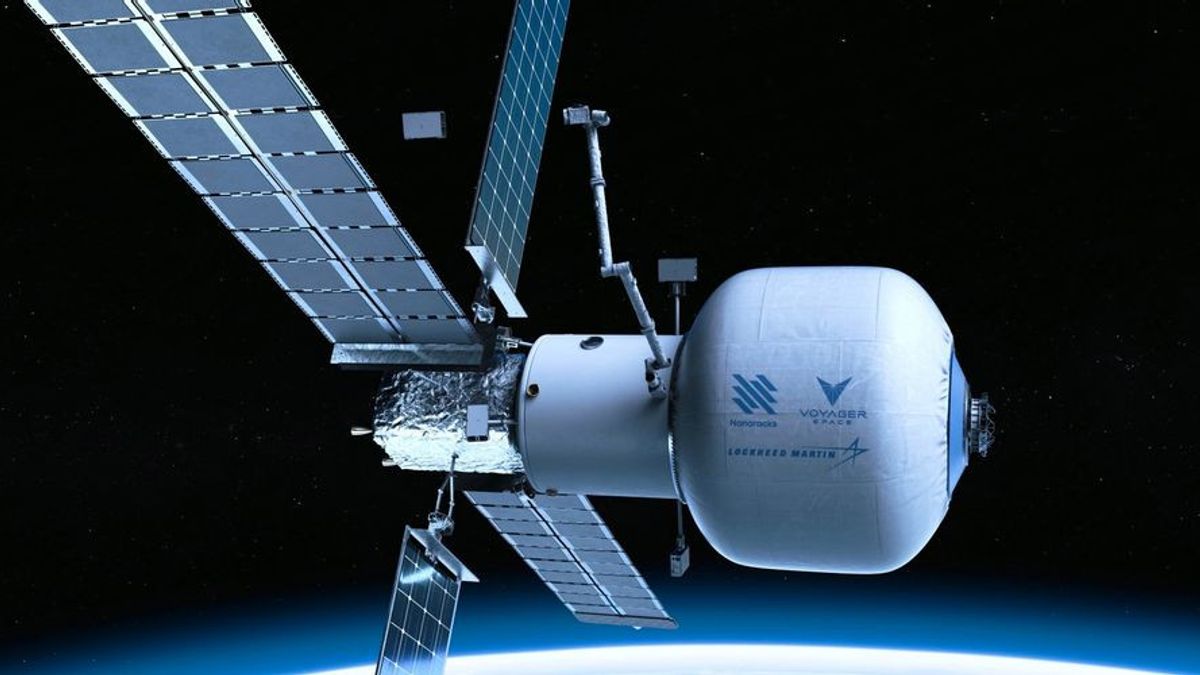JAKARTA - The first US commercial space station is coming soon. Over the past few months, news of the aging, rift, malfunction, and end-of-life of the International Space Station (ISS), along with strained Russia-US relations, have been met with calls from NASA for commercial space companies to present plans for a new US space station. .
Everyone knows the days of the ISS are coming to an end, but the big question is whether humans in lower Earth orbit will continue, and how?
Russia says it has started construction of the first module of its new station, the Russian Orbital Service Station (ROSS), which will be opened for commercial activities. China, on the other hand, has a new, fully operational space station, currently on its second crewed mission. Internationally, strategic points to be covered in the new space race are the low-orbit stations of the Earth, Moon, and Mars.
The companies Nanoracks, Voyager Space, and Lockheed Martin have teamed up and announced that they will build, launch, and operate a space station called Starlab.
The company assures that the new space station will be up and running in 2027, coincidentally just one year before the date on which ISS experts believe the old station will be decommissioned. While the station will be privately operated, it is closely tied to a NASA project that has government support, funding, and incentives for the development of a new space economy.
The new space station habitat will be an inflatable habitat. Inflatable habitats, when deflated for transport, occupy little space, facilitating the movement of habitats into space with modern rockets. The inflatable habitat construction process also solves many of the problems posed by the construction of large structures in space.
The habitat will be built by Lockheed Martin and will accommodate a permanent crew of four living comfortably in a 340 square meter space with 60kW of power. The station will also have thrusters for navigation, and a large robotic arm to service cargo and external payloads.
The space station's crown jewel will be its state-of-the-art laboratory, intended to attract commercial partners to host advanced research, science and commercial projects.
Life on the Starlab space station would be very different from any existing space habitat. Nanoracks explains that its main focus is on its customers and realizing their dreams in space. This represents a major shift in mentality compared to NASA's "humanity-focused" spirit.
Nanoracks has set its mission to own and operate the next generation of low-cost agile space stations where companies can work with customers on microgravity research and facilitate the aerospace industry revolution for manufacturing, pharmaceuticals and the like.
The vision of the new US commercial space station is a future where space frontiers produce factories, laboratories, greenhouses, and hotels, and where a new generation of researchers and entrepreneurs produce high-quality optical fibers, print innovative tissues and organs, advancing plants that new, and allowing more people to live and work in space.
It may exceed our imaginations today but for Nanoracks, Lockheed Martin, and Space Voyage it is a reality with a start date in 2027.
The English, Chinese, Japanese, Arabic, and French versions are automatically generated by the AI. So there may still be inaccuracies in translating, please always see Indonesian as our main language. (system supported by DigitalSiber.id)









